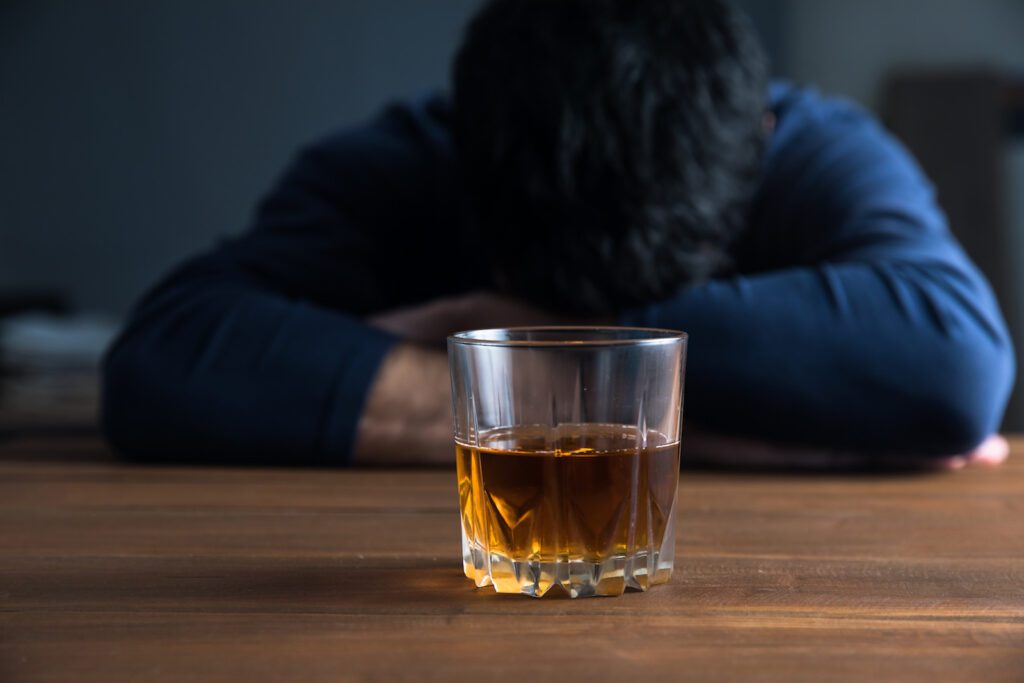
Table of Contents
An alcoholic nose, often called a whiskey nose, drinker’s nose, gin nose, or gin blossom nose, is a common way to refer to a large purple-tinted nose. However, there is a lot of urban legend surrounding alcoholics’ noses. The term “alcoholic nose” has an interesting history and an even more interesting scientific explanation.
The term alcoholic nose was made famous by the American actor W.C. Fields during the early 1900s. He was a heavy drinker and was known throughout his social circles to be an alcoholic. He had a large, bulbous nose that he referred to as his “gin blossoms,” presumably from the amount of gin he drank.
Yet the medical term for his gin blossoms was rhinophyma. Over the years, several quirky and interesting terms for alcoholics’ noses took off and became popular to refer to people with larger or purplish-red noses. Unfortunately, the medical definition for it faded into doctors’ circles as the term alcoholic nose took off in modern society.
So what is rhinophyma, and how does it connect to alcohol abuse? Please read on to learn all you need about alcoholic nose and the connection between alcohol addiction and skin conditions.
What Is Alcoholic Nose & How Does It Happen?
Alcoholic nose is defined by pop culture as the nose of someone who drinks too much. Because they drink too much, their nose becomes enlarged, bulbous, and a purple or red color. This is what pop culture myths and urban legends tell us: that someone with a large purple nose is automatically an alcoholic.
However, this is entirely not the case. An alcoholic nose is not a true diagnosis of alcoholism or even a sign of it in many cases. As stated earlier, the medical definition of an alcoholic nose is rhinophyma.
Rhinophyma is a skin condition not caused by alcohol. It is a clinical diagnosis for a form of rosacea. Rosacea is a chronic skin condition and disorder that causes the skin to appear different in texture, pigment, and size than normal skin.
Rosacea can cause large bumps or mounds that resemble acne. The skin can become inflamed and turn purple or red depending on the amount of blood in that body area. When rosacea reaches the nose, it can cause severe swelling. This is because a lot of blood rushes into the area and swells as different bumps begin to grow.
The issue is that rhinophyma has absolutely nothing to do with alcoholism. Rosacea is a separate disease and disorder from alcoholism and has no connecting cause. Someone with alcoholism does not necessarily need to have rosacea to be an alcoholic. Someone with rosacea is not immediately an alcoholic.
The same goes for someone suffering from rhinophyma. Just because they have swelling and discoloration around the nose does not mean they are an alcoholic. This stigma has caused many people to feel uncomfortable and ostracized from society.
Although there are no direct stem causes of alcoholism and rosacea that meet at one point, there is a connection between them.
Rhinophyma and rosacea can be agitated by alcohol. There are many reasons for this. Alcohol often causes people to flush red in their cheeks. Although this is not rosacea, it can worsen the effects and symptoms of rosacea in people who suffer from it.
If a person suffering from rosacea also has rhinophyma, the flushing in the face due to alcohol can increase the visibility of their rosacea and rhinophyma symptoms. That means someone drinking heavily may show flushed cheeks and an enlarged nose with a red or purple tint if they have rosacea.
Side Effects of Alcoholic Nose
While there are no severe side effects of alcoholic nose, the main side effect is their physical appearance. Alcoholic nose does not prevent someone from breathing or give them any trouble in their day-to-day life. It does not affect their ability to drink alcohol or do their job.
The only way rhinophyma affects a person’s life is how it sits on their face. We live in an incredibly judgmental society, and for a person presenting a large reddish or purple nose, people will assume that it looks that way because they are an alcoholic. Instead, they may have rosacea.
In general, people with rosacea tend to flush more when they are drinking. So a person with rhinophyma may see their nose get redder or more pigmented when they drink. If a person drinks too much alcohol, their nose might become bright red if they suffer from rhinophyma. This is simply the alcohol agitating a pre-existing disorder.
It is incredibly important to remember that alcohol does not cause this disorder. There is no connection between alcoholism and having a big nose. One agitates the other one to become worse. It is like having an allergic reaction to peanuts and eating a spoonful of peanut butter. You already have an allergic reaction to the peanuts, but by adding more peanuts, you are adding a bigger reaction and agitating the reaction more, making it worse.
How Alcoholic Nose Can Point to an Addiction at Hand
Because alcoholic nose and alcoholism are not officially connected, it is hard to say that alcoholic nose points to an addiction. However, if somebody has rhinophyma or rosacea and drinks heavily, their symptoms will be agitated.
By looking at it from this perspective, someone with agitated rosacea or rhinophyma will have a visible agitation of their skin. Thus, somebody who is an alcoholic and rhinophyma may have a redder and more bulbous nose than their red, and bulbous nose usually is. This is not a way to make a diagnosis of alcoholism.
This is simply a way in which a close friend or loved one may be able to notice a physical change in a person’s skin condition that could indicate alcohol abuse. You cannot and should not assume that somebody is an alcoholic simply because they have rhinophyma. You can only use rhinophyma as a starting place for someone you know well.
If you use rhinophyma as a starting point to monitor a close friend or loved one, you can look for agitation of their rosacea symptoms over time. The more alcohol they consume, the more aggravated their symptoms will be and the more they will spread.
However, it is very important to note that rosacea and rhinophyma can be agitated by things other than alcohol. Stress, sleeplessness, dehydration, depression, improper diet, dry skin, and many other factors can agitate rosacea and rhinophyma. Alcohol is not the only agitator of rosacea.
How to Get the Help You Need if You Suffer From Alcoholic Nose
If you are suffering from an alcoholic nose and are an alcoholic, you can get help. It is okay to reach out for help regardless of what is happening. For help with rhinophyma, you can get in touch with your dermatologist or your general practitioner. They can help prescribe a lotion or medication that you can take to reduce the inflammation and lower the visible symptoms of your rosacea.
If you are suffering from alcoholism, do not worry. There are plenty of options for you. For starters, communicate with close friends and family about your situation. Entrust your addiction with people who love and care about you and want to see you happy. Tell them about your struggles and how your alcoholism is agitating your rosacea.
Create a support group of your friends and family so that they can help you through this challenge. Remember that it is easier to do this when you have support or professional help. When seeking professional help, make sure you find the right place for you, full of professional staff members looking to guide you to a better life.
If you or a loved one suffers from alcoholism, please get in touch with our alcohol rehab in Orange County immediately. You deserve the opportunity to live a life free from addiction and the bondage it can create. Furthermore, you deserve the time and commitment you will invest in your future self.
Sources:
Ocean Recovery has strict sourcing guidelines and relies on peer-reviewed studies, academic research institutions, and medical associations for our references. We avoid using tertiary references as our sources. You can learn more about how we source our references by reading our editorial policy.
1. UT Southwestern Medical Center. Rhinophyma | Condition | UT Southwestern Medical Center. Accessed July 28, 2022. https://utswmed.org/conditions-treatments/rhinophyma/






